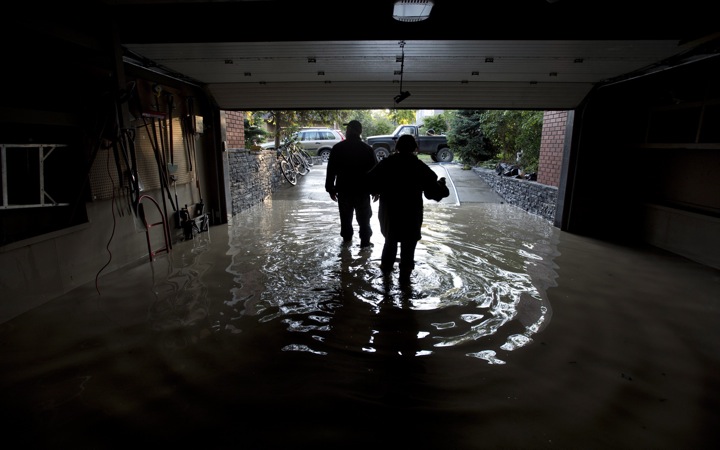A timeline of the flooding that has devastated parts of Alberta.

June 8: A slow-moving weather system over Saskatchewan begins dumping rain on northern Alberta, eventually drenching the region with between 80 to 100 millimetres, according to Alberta Environment.
June 10: A 30-kilometre section of Alberta’s highway 63 is flooded.
June 11: Fort McMurray declares a state of emergency as the Hanging Stone River breaches its banks. Evacuation orders go into effect. Alberta Health Services also issues a boil water advisory for the area.

Get breaking National news
June 14: Premier Alison Redford visits Fort McMurray as flood waters recede, but forecasts call for more rain.
June 15: Alberta Environment downgrades flood warnings to flood watches in the northeastern part of the province.
June 19: Torrential rains begin falling over southern Alberta.
June 20: Environment Canada issues a rainfall warning for southern Alberta. About 100 mm of rain falls on the region, and the national forecaster predicts the amount could double over the next few days. More than a dozen different communities from north of Calgary, south to Lethbridge and west to the Rocky Mountain parks declare states of emergency. High River and Canmore are among those worst hit by the flooding. Mud slides cause part of the Trans-Canada Highway running through Banff National Park to be closed. Evacuation orders begin to be issued in low-lying areas of Calgary.
June 21: Evacuations in Calgary shift into high gear as the Bow and Elbow rivers continue to rise. About 75,000 are forced to flee the rising rivers. Water seeps into the Saddledome, the city’s National Hockey League arena, and swamps the grounds of the Calgary Stampede. Premier Alison Redford promises financial assistance for flood victims. The Department of National Defence deploys soldiers to the flood zone to help out. Prime Minister Stephen Harper visits Calgary and offers words of encouragement to residents. Officials say at least three people have died in southern Alberta as a result of the flooding. The town of Medicine Hat declares a state of emergency as downstream communities brace for their own round of flooding.
June 22: Under sunny skies, rivers in Calgary begin to recede and officials begin giving permission for some evacuated residents to return home. Still, there’s no lack of bad news. The Calgary Flames say everything below the eighth row of the Saddledome is a write-off, and the federal Conservative Party postpones their convention slated to take place in the city the following weekend. In Medicine Hat, thousands of people are ordered to evacuate as the South Saskatchewan River continues to rise. Flood watches go into effect for Edmonton. Flooding also forces evacuations in communities in Saskatchewan and B.C.
June 23: About 65,000 Calgary residents are given the all-clear to return home even as cleanup efforts continue. Provincial officials say 27 communities had declared states of emergency. The South Saskatchewan River continues to rise, further threatening Medicine Hat.
June 24: The Alberta government announces a $1 billion fund to rebuild from the floods, which Premier Alison Redford says have changed the province forever. The cash means Alberta will be unable to balance its budget on the government’s proposed timeline.







Comments